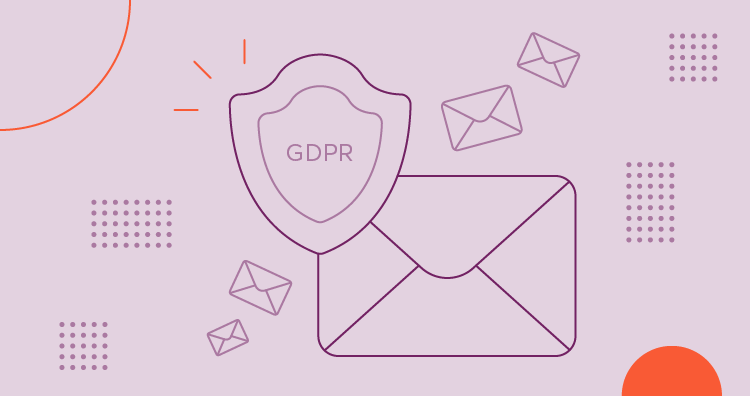Data is enormously valuable for any business out there. It helps marketers build new tools, gain new insights and eventually leads to growth. But! Data is personal and it must be ‘freely given, specific, informed and unambiguous’.
These requirements are introduced under the GDPR which came into force to regulate how the personal data of EU citizens is processed by companies – and also brought fear, panic and frustration to most digital marketers!
But there is good news. Instead of seeing it as a necessary evil, there are a few steps you can take to treat privacy as a human right, keep regulators happy and turn GDPR into an opportunity to win your customers’ trust. Here’s what you can do.
Ask for the data you need, no more, no less
Customers don’t like to be overwhelmed. Asking for unnecessary information will probably signal a red flag. Actually, the less data you ask for, the more subscriptions you’ll gain. And the more your conversions will increase.
A signup form with 10 fields will only make your potential customers run away. In other words, prioritize the information you want most and if you don’t need it, don’t ask for it!
Let your subscribers know what to expect
Your customers need to know why they’re giving their information away and what exactly they are signing up for. If there is a call-to-action they need to click on, make sure it’s clear and specific. When they opt-in to receive a monthly newsletter, do as you promised.
Here’s an idea: each time a user opts-in, you can send them automatically an SMS which confirms and informs them what they just signed up for! When people receive what they asked for, they are less likely to complain.
Make it easy for them to change their mind
This is a great chance for you to build real trust with your customers – by placing data control back in their hands. When you ask for their consent, make it clear that they can change their mind later, if they wish to. For example, you can add an ‘update preferences’ or ‘unsubscribe’ link at the end of your message.
By letting them manage their privacy settings and execute their rights, you allow them to become active participants. Active participation equals engagement. And engagement goes hand in hand with conversions.
Deliver value in exchange
Make sure your customers understand why they share their data with you and take the opportunity to explain that it also has benefits. Let them know how the collected data will help you better understand their needs and deliver better offers.
If knowing more about them will help you deliver a great experience and save them time and money, say it. Simply put, help them see that this is a fair exchange
Be honest!
Not every customer will be obsessing over how their information will be used and processed, but it’s really important (and GDPR-compliant) to be transparent, especially for new customers. Withholding information is never a good idea.
Inform your subscribers about the data you collect and how it is treated in simple words, like you’d do in an everyday conversation. Effective communication in the cornerstone of business-customer relationship and will greatly help you strengthen both trust and engagement with your customers
There’s no doubt GDPR presents challenges for marketers. However, it also provides a rare opportunity to better understand customer needs and establish a foundation of trust – which can lead to a mutually beneficial relationship. After all, customer trust is what makes businesses grow!

